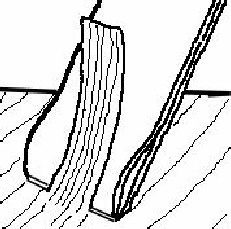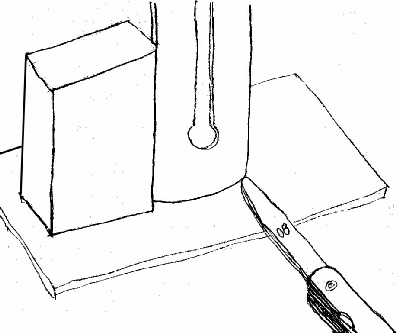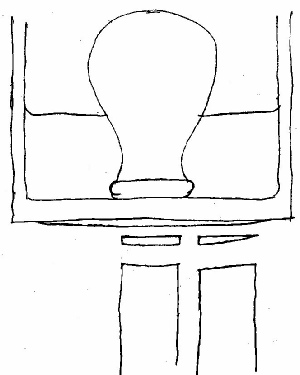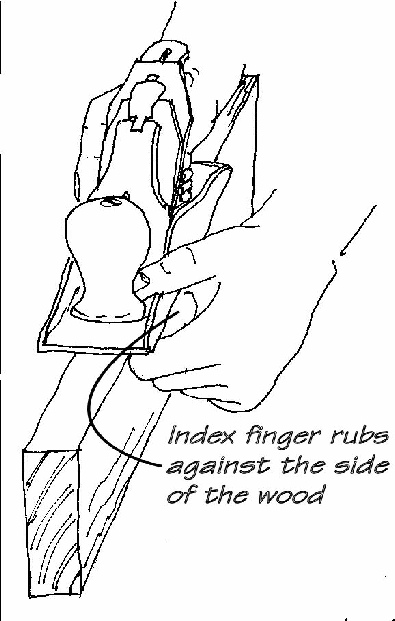

Firstly, form a slight camber (crown) to the plane blade
With a 4thou camber you should get a wider shaving than this but the corners of the blade must not go under the surface of the wood.


There's no need to do this very often, but it will give an idea of what a 4thou (0.08mm) camber looks like.
In fact, you can probably get this amount of camber without trying, especially if your stone is a little hollow.
Please note that although a 4thou camber is suggested, because of the inclination of the blade, the actual maximum projection below the plane's sole (the 'set') will be in the region of 3thou.
For finish planing even on mild hardwoods, a full-width 2thou shaving can take some pushing, so your set may be reduced, thereby producing a narrower shaving.
When sharpening to create a cambered edge profile, just press harder on one side then on the other. Alternatively, you can allow one side, then the other, to overlap the stone as you work backwards and forwards. Take care not to allow the blade to tilt, or the corner of the stone will cut a groove in the edge.


Tip:When removing much material from narrow stock, the blade can soon dull. If the protrusion of a cambered edge is slightly altered with the lateral adjustment lever, an unworn part of the blade can be brought into play.
The principle, therefore is that you correct an off-square edge by offsetting the centre of the plane over the high edge. Keep the sole firmly in contact with the wood. Unless the edge is wildly off square, don't try to control the angle with your wrist.
Use the index finger as a fence. If the edge is twisted, move the plane sideways as you go.